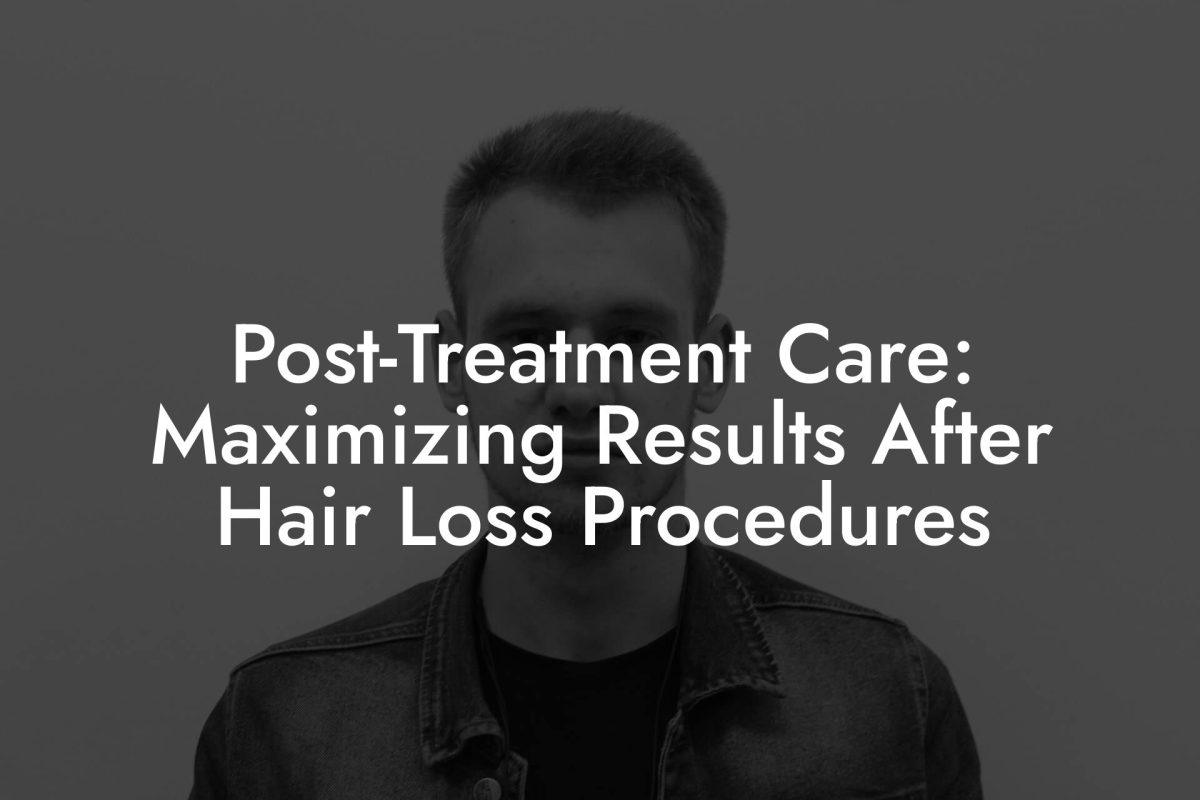Hair Loss Library
Hair Transplant 101: A Beginner’s Guide for Men

If you’ve ever caught a glimpse of your reflection and thought, “Whoa, when did I start auditioning for a receding hairline commercial?”—welcome to Hair Transplant 101: A Beginner’s Guide for Men. Whether you’re a millennial worried about Zoom meetings or a Gen Z guy who just wants to keep his signature look intact, we’re here to break down the ins and outs of hair transplants in a fun, engaging, and totally relatable way. Prepare to dive deep into the world of mane magic where science meets style, and where your hair’s next chapter might just be the best one yet.
Understanding Hair Loss: The Basics
Hair loss is one of those topics that can feel like a punch in the gut—and not the kind you enjoy at a rock concert. Most men experience hair thinning or receding over time, and while it might seem like a runaway train, there’s actually a lot going on under the surface. Genetics, hormones, stress, diet, and sometimes even that relentless marathon of all-nighters for your passion project all contribute to the saga of your disappearing locks.
At its core, hair loss is a natural process. Our hair goes through cycles, and eventually, many of us enter a phase where our follicles start to take a backseat. And yeah, while some folks rock the bald look with swagger, others prefer to keep their hair game strong. Understanding where your hair loss comes from is the first step in reclaiming your crowning glory.
For many men, the root cause (pun intended) of hair loss is androgenetic alopecia, which might sound like a mouthful but is simply male pattern baldness. This condition is genetic and hormonal, meaning it can run in the family and be triggered by levels of dihydrotestosterone (DHT). In simpler terms, while you might envy that shiny dome look from time to time, you might also be thinking, “I want my hair back!” This guide is tailored for you.
Besides genetics, lifestyle factors come into play too. Stress, over-styling, and even certain medications can create a perfect storm for hair to play hide and seek. The good news? With modern technology and medical advancements, there are ways to combat hair loss and even restore what nature might have taken away.
What Is a Hair Transplant? A Primer
In the simplest terms, a hair transplant is a surgical procedure designed to move hair follicles from one part of your scalp (often referred to as the “safe zone”) to a balding or thinning area. Think of it like borrowing a few well-behaved hair soldiers from the back of the line to help bolster your frontline.
Modern hair transplant techniques have come a long way from the days of plug grafts that made you look like you had a patchy, uneven lawn. Today’s methods deliver results so natural that even your barber might do a double-take. The main idea is to restore density, improve hairline design, and ultimately boost your confidence in front of the mirror.
Most hair transplants aren’t about instantly snatching away years of hair loss—they’re about gradually redistributing your existing hair to enhance coverage and aesthetics. The magic lies in meticulously extracting and implanting individual hair follicles, which then grow in their new location just like they would anywhere else on your scalp.
The Science Behind Hair Transplants
It all starts with understanding the biology of your hair follicles. Each hair follicle is a tiny but mighty unit responsible for producing hair strands. When a follicle from the back or side of your head is transplanted, it retains its robustness against hormones that typically cause hair thinning in other areas. This is often referred to as the “permanent zone.”
Once transplanted, these hardy follicles enter a resting phase before gradually resuming their normal growth cycle, much to the delight of your scalp. The procedure itself requires precision—a harmonious marriage of art and science where careful extraction, handling, and implantation are paramount. Surgeons use specialized tools and techniques to minimize trauma to the follicles and maximize the chances of a full hair regrowth.
There are two main techniques in today’s repertoire: Follicular Unit Transplantation (FUT) and Follicular Unit Extraction (FUE). While both aim to achieve that coveted fuller head of hair, they differ in their approach, recovery time, and how the scars are managed. Understanding these methods is key to making an informed decision about which procedure suits your lifestyle and expectations.
FUT vs. FUE: The Battle of the Techniques
Let’s dive into a friendly showdown between FUT (Follicular Unit Transplantation) and FUE (Follicular Unit Extraction)—two techniques that have revolutionized hair restoration.
Follicular Unit Transplantation (FUT)
FUT involves removing a strip of scalp from a donor area (usually the back of the head) and then dissecting it into tiny follicular units. These units are then meticulously transplanted into thinning or balding regions. FUT tends to yield a high number of grafts in one session and is often preferred by patients who need a significant number of grafts. However, because it involves a strip removal, there is a linear scar that may be hidden by surrounding hair if managed well.
Follicular Unit Extraction (FUE)
On the other side of the ring is FUE, a technique that involves extracting individual follicles from the donor area using a small punch tool. This method minimizes visible scarring—think tiny, almost invisible dots scattered in your hairline like secret confetti. FUE has become popular for its less invasive nature and quicker recovery time, although it might be a bit more time-intensive for the surgeon, meaning multiple appointments could be necessary.
No matter which method you lean towards, both FUT and FUE aim to give you a natural-looking head of hair. Your choice will depend on your specific situation, the extent of your hair loss, and the recommendation of your hair restoration specialist.
Who Is a Candidate for a Hair Transplant?
Not every bald spot or thinning patch means you’re a candidate for a hair transplant, though the possibilities are pretty exciting for most men experiencing hair loss. Ideal candidates are generally those in the early to mid-stages of hair loss who have enough healthy hair in their donor area to support the transplant. But hey, if you’re nearing the full-on bald look and love rocking that look—but secretly dream of having a bit of hair on top—this guide can still help you make informed decisions.
The best candidates also have realistic expectations. It’s not about turning back time and restoring your mane to its glory days overnight, but rather about enhancing the density and aesthetic balance of your hairline. Your surgeon will examine factors such as hair density, scalp laxity, and overall health to determine if you’re a good match for the procedure. In short, if you’re ready to invest in a future with more hair (and more mirror selfies), chances are you’re a great candidate.
It’s also important to consider your lifestyle and recovery expectations. Those who lead a busy, fast-paced life might prefer the less invasive FUE for its minimal downtime, while others might opt for FUT if they need a larger volume of grafts in one session. Consult with a specialist who can walk you through the pros and cons based on your personal hair story.
Preparing for a Hair Transplant: Your Roadmap to a New You
Preparation is everything—kinda like prepping for a big date or an important job interview. The day of your hair transplant might just be one of the most transformative days of your life. This phase involves more than just showing up; it’s about setting the stage so you and your surgeon are on the same page.
The first step is a comprehensive consultation. During this session, your surgeon will assess your scalp, review your medical history, and discuss your goals. You’ll get the lowdown on what to expect before, during, and after the procedure. It’s also a prime time to ask questions about the techniques, recovery process, and any lifestyle modifications you might need to make.
Pre-surgery instructions might involve avoiding certain medications, supplements, or activities that could affect blood clotting—yes, we’re talking about that pre-party avoidance of aspirin, alcohol, and even some over-the-counter painkillers. Think of it as your hair’s way of staging a rebellion against any potential hiccups during the big day.
In addition to the medical prep, make sure your schedule is ready for a little R&R afterward. The recovery phase is critical, so plan to take it easy for a few days, stock up on your favorite comfort foods (healthy ones count, too!), and maybe line up some binge-worthy shows. A well-rested scalp is a happy scalp.
The Procedure: From Start to Finish
Now that you’re prepped and ready to roll, let’s talk about what happens during the actual procedure. Hair transplants are typically performed under local anesthesia, so you’ll be awake—though you might feel like you’re in a particularly chill episode of your favorite show.
The surgeon begins by prepping the donor area (usually the back or sides of your head) and administering a local anesthetic. If you’re going the FUT route, a strip of scalp is removed, and the surgeon carefully dissects it into individual follicular units. If FUE is your jam, individual hair follicles are extracted one by one with precision tools that ensure minimal disruption.
Once your precious follicles are safely collected, the magic happens in the recipient area. Tiny incisions are meticulously made where the new hair will grow, and each follicle is delicately implanted. It’s a process that requires a steady hand and a keen eye for detail—after all, symmetry is key when it comes to that natural hairline.
The entire procedure can last anywhere from 4 to 8 hours, depending on the number of grafts needed and the technique used. During this time, you might even nap, catch up on some podcasts, or marvel at the quiet hum of modern medical technology working behind the scenes to restore your confidence.
Aftercare and Recovery: Post-Procedure Tips
Congratulations, you’ve officially taken the plunge into the realm of hair restoration! But the finish line isn’t reached the moment you step out of the clinic—it’s only the beginning of your hair journey. The aftercare phase is where you give your transplanted hair the best possible chance to settle in and thrive.
In the first few days post-surgery, you’ll be advised to avoid strenuous activities, exposure to direct sunlight, and anything that might cause friction or irritation to your scalp. Think of it as a spa retreat for your head, complete with gentle shampoos, cool compresses, and a lot of chill time.
Your surgeon will likely prescribe a regimen of medications to prevent infections and reduce inflammation. Be diligent about following these guidelines—they’re your secret weapon against any potential complications. It’s also essential to resist the urge to scratch or pick at your scalp, as tempting as it may be when you’re healing.
Over the next few weeks, you might notice your transplanted hair entering a resting phase before beginning to grow. Patience is crucial here. Hair typically starts to make its debut in about 3 to 4 months, with continued improvements over the course of a year. In the meantime, follow up with your surgeon to ensure everything’s on track, and don’t hesitate to reach out if you have any concerns during your recovery.
Risks, Considerations, and What to Expect
Just like every epic tale, your hair transplant journey comes with a few challenges along the way. While modern techniques have minimized most risks, it’s important to be aware of potential complications and to manage your expectations. Think of it as the necessary cliffhanger in your story—only with fewer plot twists.
Some common risks include minor swelling, redness, and a bit of discomfort that might stick around for a couple of days. In rare cases, infections or scarring can occur. However, these risks are usually easily managed with proper care and adherence to your surgeon’s pre-and post-procedure instructions.
It’s also worth noting that not everyone achieves a full head of voluminous hair immediately after the procedure. Hair transplants are gradual processes, with results emerging incrementally. The final outcome depends on factors like your natural hair density, the extent of your hair loss, and the skill of your surgeon. Maintaining realistic expectations will help you appreciate each step of your transformation.
Communication with your medical team is key. Any persistent pain, unusual swelling, or signs of infection should be promptly reported. Remember, you’re not in this alone—your surgeon and support crew are there to help you navigate the ups and downs of hair restoration.
Cost Considerations: Budgeting for Your Mane Makeover
Let’s talk dollars and sense—because while the idea of having a full head of hair is priceless, the procedure itself can be a significant investment. The cost of a hair transplant varies widely, taking into account the number of grafts required, the technique used, and the geographic location of the clinic. It’s not uncommon for prices to range anywhere from a few thousand to tens of thousands of dollars.
Many clinics offer financing options, payment plans, or even package deals that can make the process more budget-friendly. Investing in a hair transplant isn’t just about vanity—it’s an investment in your self-esteem, career prospects, and overall quality of life. After all, every time you catch a glimpse of your revitalized hairline, you’re reminded that sometimes splurging on yourself pays off in spades.
It’s a good idea to research clinics thoroughly, read reviews, and schedule consultations to compare costs and techniques. While price is important, don’t let it overshadow the quality and expertise of the practitioner. Prioritize clinics with a track record of successful procedures and satisfied clients, and remember that your hair transformation might just be the most rewarding investment you ever make.
Lifestyle Tips for Maintaining Your New Look
Securing a hair transplant is a major first step, but keeping your mane looking magnificent over the long haul requires a bit of maintenance and lifestyle tweaks. Think of it as treating your hair like a fine sports car—it needs the right fuel, occasional pit stops, and a little extra love to perform at its best.
First, maintain a healthy diet rich in vitamins and minerals. Nutrients like biotin, zinc, and iron play significant roles in hair health, so load up on foods that fuel your follicles. Don’t forget hydration—staying well-hydrated keeps your scalp nourished and promotes healthy hair growth.
Regular scalp care is another crucial element. This might include gentle washing with a suitable shampoo, periodic scalp massages to boost circulation, and avoiding over-styling with harsh chemicals or excessive heat. The aim is to create an environment where your transplanted hair can thrive.
And of course, manage your stress levels. We all know that a chill head leads to, well, chill hair. Incorporating stress-reduction techniques like meditation, exercise, or simply unwinding with your favorite music can have a surprisingly positive impact on your hair’s vitality. In essence, treat your scalp like the delicate masterpiece it is, and it will reward you with the kind of head-turning results you never thought possible.
Myths and Misconceptions: Debunking Hair Transplant Hype
Rumors and myths about hair transplants have been circulating longer than some of the questionable hair products you might find online. Let’s bust a few of these myths and set the record straight so you can make your decision based on facts, not fads.
Myth #1: “Hair transplants look unnatural.”
Truth: Modern techniques like FUE and FUT are designed to mimic natural hair growth. With careful planning and precise execution by skilled surgeons, your new hair line will look as authentic as your morning coffee ritual.
Myth #2: “The procedure is insanely painful.”
Truth: While there is some discomfort involved, local anesthesia minimizes pain during the procedure, and post-operative discomfort can generally be managed with prescribed medications and a bit of extra downtime.
Myth #3: “You can’t wear hats or style your hair normally after a transplant.”
Truth: Once your transplanted hair settles in and you’re cleared by your doctor, you’re free to rock the latest trends—hat, no hat—without worry.
Myth #4: “Hair transplants are only for the rich and famous.”
Truth: With a range of clinics offering flexible financing and different procedures tailored to various budgets, hair transplants are becoming increasingly accessible, helping everyday guys achieve extraordinary results.
By debunking these myths, you can approach your hair restoration journey with a clear head (pun intended) and realistic expectations. It’s time to separate fact from fiction and embrace modern science in the service of confidence.
FAQ: Your Hair Transplant Questions Answered
We get it—when it comes to your hair, you have a million questions swirling around like stray strands in the wind. Here are some of the most frequently asked questions to help you navigate your hair transplant journey, all answered in a straightforward, jargon-free manner.
1. What exactly is a hair transplant?
A hair transplant is a surgical procedure in which hair follicles are removed from areas of the scalp with healthy hair growth and implanted into areas that are thinning or bald, resulting in a fuller, more natural-looking head of hair.
2. What are the main techniques used in hair transplants?
The two primary techniques are FUT (Follicular Unit Transplantation) and FUE (Follicular Unit Extraction). FUT involves removing a strip of scalp and dissecting it into individual grafts, while FUE extracts individual follicles directly from the donor area.
3. How long does the procedure take?
Depending on the technique and the number of grafts required, the procedure can last anywhere from 4 to 8 hours.
4. What is the recovery process like?
Recovery typically involves some swelling and discomfort for a few days, followed by a gradual restoration of hair growth that can start around the 3- to 4-month mark, with optimal results seen after about a year.
5. Will the transplanted hair look natural?
Absolutely. With advances in technique and planning, most hair transplants yield a natural hairline and density that blends seamlessly with your existing hair.
6. Is the procedure painful?
The procedure is performed under local anesthesia, so most patients experience minimal pain during and immediately after the surgery.
7. How many sessions might I need?
For many, one session is enough to achieve significant results. However, some cases might require multiple sessions depending on the extent of hair loss.
8. Can I style my hair as usual after a transplant?
Yes, once you’ve fully recovered, you can style and cut your hair just like before—no extra special treatment required.
9. Are hair transplants permanent?
The transplanted hair is typically resistant to the hormone that causes male pattern baldness, meaning the results are usually permanent, though age and lifestyle factors can still influence overall hair health.
10. How do I choose the right clinic?
Do your research, read reviews, and schedule consultations with experienced hair restoration specialists to find a clinic whose approach, technique, and results align with your expectations.
Resources and Community Support: Your Next Steps
So, you’re on the brink of taking a huge step toward reclaiming your hair—and your confidence. But remember, you’re not in this alone. The journey to a fuller head of hair is as much about community and support as it is about the surgical procedure itself.
Look for online forums, social media groups, and community support networks where individuals share their experiences, tips, and success stories. Platforms like Reddit, specialized Facebook groups, and even YouTube channels dedicated to hair restoration can be treasure troves of real-life advice and encouragement.
Additionally, many clinics offer follow-up services, counseling, and even one-on-one coaching to help you navigate the emotional roller coaster that sometimes comes with hair restoration. Learning from those who have walked the path before you provides not only guidance but also a sense of camaraderie.
Whether you’re seeking answers to practical questions or just a reassuring “you’re not alone in this,” these community resources can offer invaluable support. They might even help boost your motivation on days when progress seems slow. Remember, every journey is unique, and having a supportive network can make all the difference.
So go ahead—dive into the wealth of resources available online, engage with experts, and reach out to others who share your goals. Your journey to a renewed and empowered mane is just beginning, and every step you take is a victory worth celebrating.
Your Journey to a Bold New Mane: Embrace the Transformation
Embarking on a hair transplant journey is about more than just restoring strands—it’s about reclaiming your self-confidence, redefining your style, and stepping boldly into the future. Embrace the process with a light heart and an open mind, knowing that every stage, from the initial consultation to the final flourish of your rejuvenated hairline, is a testament to your commitment to looking and feeling your best.
As you navigate each phase—from understanding hair loss to choosing the right technique, preparing for the procedure, and finally, enjoying that awesome new look—remember that you are taking control of your destiny. The road to hair restoration may have its ups and downs, but it’s also paved with moments of triumph, revelation, and yes, a few laughs along the way.
Whether you’re wearing hats during those early recovery days or strutting down the street with a confident bounce in your step once your hair starts growing back, your journey is uniquely yours. Embrace every twist and turn, trust the process, and know that with the right blend of science, art, and a dash of humor, a bold new mane is well within reach.
Now is the time to take that leap, celebrate your individuality, and invest in a future where every hair on your head tells a story of resilience, transformation, and unstoppable confidence. Get ready to turn heads—because your best hair days are ahead.
If you loved this article... Dive deeper into the world of mens hair loss with our most popular sections. If there is anything you think is missing or anything you would love for us to write about, just give us a shout.
Prescription Solutions: The Best Medications for Men’s Hair Loss
Minoxidil & Beyond: Exploring Topical Treatments for Hair Regrowth
How Finasteride Works: The Science Behind This Hair Loss Blocker
Platelet-Rich Plasma (PRP) Therapy: Is It the Answer to Hair Loss?
Hair Transplant 101: A Beginner’s Guide for Men
Exploring Laser Therapy: Non-Invasive Options for Hair Regrowth
The Pros and Cons of Oral Hair Loss Medications
New Frontiers in Hair Loss Treatment: Stem Cell Therapy Explained
Surgical vs. Non-Surgical: Which Hair Loss Treatment Is Right for You?
Understanding Combination Therapy for More Effective Hair Regrowth
How to Choose the Right Hair Loss Clinic: Expert Tips
Exploring Off-Label Treatments: What’s Worth Trying for Hair Loss?
Managing Side Effects: What to Expect from Hair Loss Medications
The Latest in Hair Loss Research: Emerging Medical Treatments
Microneedling for Hair Loss: Benefits, Risks, and Results
How PRP Therapy Boosts Hair Growth: A Closer Look
The Role of DHT in Hair Loss and How Medications Counteract It
Customized Treatment Plans: Tailoring Hair Loss Solutions for You
Understanding Clinical Trials: How New Hair Loss Treatments Are Tested
Breaking Down the Cost of Hair Loss Treatments: Is It Worth It?
How to Prepare for a Hair Transplant: A Step-by-Step Guide
Post-Treatment Care: Maximizing Results After Hair Loss Procedures
A Doctor’s Perspective: When to Consider Medical Hair Loss Treatments
Success Stories: Real Men Share Their Hair Restoration Journeys
The Future of Medical Hair Loss Solutions: Trends to Watch
















